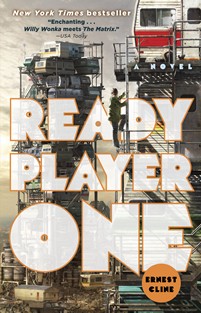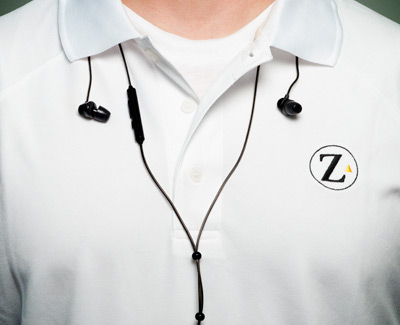Looking for a simple daypack for quick adventures? Me too. I’ve been using a Geigerrig Rig 1210 (looks something like this one) for a while, but found it to be a little too small, awkwardly configured, and generally just not really what I wanted. After weighing some options, I ended up with a decision between 2 packs: the Arc’teryx Brize 25, and the Patagonia Nine Trails 28L.
In getting there, I worked out a rough list of things I cared about:
- Approximately 25 liters. Based on my current bag, and looking at some options, somewhere around this amount felt right. I specifically didn’t want something too big, because it’d just encourage me to carry more stuff in there.
- External pockets. I wanted a few spots accessible without having to dig into the main compartment. That being said, I don’t want the whole bag divided up into a million small pockets (as the Geigerrig is), because that never ends up being useful for me.
- Hydration compatible. I mostly want something for day hiking, snowshoeing, and mountain biking, so something with hydration space is important.
- Sleek/minimal. I don’t want this bag to be overbuilt, heavy, or trying to be a full-on hiking pack. It’s not going to carry that much weight, but it does need to be reasonably sturdy in its own right.
- Decent structure. I didn’t want one of those fold-into-its-own-pocket type bags that’s just a loose sack of material.
So I narrowed things down to the Brize and Nine Trails. Both were the same price (at least when I was looking at them — $160), roughly the same weight, and seemed to meet most of the above requirements.


Patagonia Nine Trails 28L
I liked that this came in a “L/XL” sizing, which was quite a bit taller/longer, and fit my body well. The main reason that was relevant though, was because it was trying to be more of a hiking pack than I was really looking for. It has a much more substantial hip-belt than the Brize, including some small hip-belt pockets. I found those pockets hard to access while wearing the pack though, and they were really small, making them feel a bit useless. There was also a defect in the manufacturing in one of them where the padding was stitched in folded over. The pack had load-lifters on the shoulder-straps, which felt like overkill. The fabric on the should-straps was also strangely loose and bunched up in places, which made things feel poorly constructed.


There’s a large external stuff-pocket which is nice conceptually, but I don’t like that type of fabric much as I’ve had it tear and stretch on other packs previous. There’s also a long, asymmetrical zipper to get access to the main part of the pack, although it’s constrained somewhat by the compression strap on one side. I was not really a fan of the long zipper combined with the “light” fabric used on the pack, which meant the zippers didn’t really run freely.

Up top you have a top pocket which faces away from your back when wearing the pack (good for other people to get things out for you, probably not great if you’re wearing it the city or somewhere else that crime is a concern). Down the bottom is a semi-hard bottom, with corner lashing points for attaching a sleeping roll/tent externally. They’re pretty minimal, but an interesting touch.


Arc’teryx Brize 25
Overall, the Brize just felt much better constructed. The main fabric is a heavier/denser weave, everything seemed to be stitched more accurately, zippers felt more solid etc. There are daisy-chains down both sides of the front, although they’re really unobtrusive, which I liked. The main opening, and the top pocket, both face in towards your back when you’re wearing it. This is an interesting departure compared to most packs, but provides a little more security if wearing the bag in the city, since it’s hard to get into them.

The shoulder pads are really comfortable and well-padded. The waist-belt is minimal (just webbing, no padding), and really just provides some stability. You definitely wouldn’t want to try taking any weight on it. There’s an ice-pick/hardware loop at the bottom, as well as what I assume is intended to be a loop of attaching a bike light or similar.

My biggest complaint with the Brize is how the hydration routing works. It makes no sense. You put a bladder in the internal pocket, then you have to route the hose over the internal pocket to get to the exit port. From there, it comes out right in the middle of the top handle. It’s really awkward, and not only makes it difficult to get to the internal pocket, but means the hose gets in the way when you use the top handle as well. I think they should have just put an exit port on each top corner and been done with it.
Similarities
There were a couple of things that I thought were interestingly similar between the 2 packs. In both cases, the back was made of a thermoformed mesh style material which provides structure and airflow against your back, but is super light:

Both packs also had incredibly similar buckles on the sternum straps (which I noticed because it was a “new” design that I haven’t seen before):
Both packs also had decent side pockets on each side, which can fit a 1L Nalgene bottom. The Nine Trails uses the same super stretchy fabric as the front stuck-pocket, while the Brize uses a combination of the same heavy fabric used elsewhere, with a portion of heavy stretch fabric that feels more substantial than the Nine Trails.
Verdict
I ended up going with the Brize. It felt like a better fit for my needs, and felt more versatile especially for using while riding (whereas the Nine Trails felt like overkill for that in particular). I really like the build quality, the sleekness of the pack, and I’m honestly just a bit of a sucker for Arc’teryx’s gear in general. I can live with the weird hydration routing issue highlighted above. So far I’ve taken it on a bike ride (loaded up with hydration, pump, layers, and the Nine Trails itself, since I was returning it), and on a snowshoeing/snow-hiking trip and it worked nicely. Plenty of room to drop my Jetboil in there, along with gloves/hat/sweater at different times. I also have a small kit of emergency items (med kit, small knife, lighter, etc) that now lives at the bottom of the pack, just in case.





























